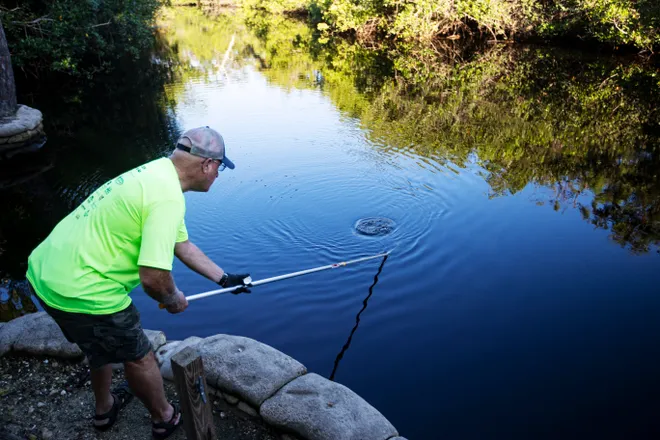Originally published in the News-Press by Chad Gillis on October 7, 2024
Chuck Avery grabbed a small glass jar and lid, attached it to the end of a pole and walked down the boat ramp at Koreshan State Historic Site in Estero.
He scoops up water, three times, and dumps it back in the river. Then he places the jar 18 inches below the surface and scoops up some tannin-stained waters.
“That’s it,” he says, securing the labeling to the jar before taking it to San Carlos Park to meet up with another volunteer for Calusa Waterkeeper.
Avery is part of a small army of volunteers who scour Lee County creeks and rivers in hopes of better understanding pollution in the various watersheds, and they’ve been out in droves over the past week trying to capture a snapshot of local water quality after Hurricane Helene stirred local waters and flooded island communities.
Water quality is often a mystery after a large storm as nutrients and other pollution on the bottom of rivers and bays are stirred up and placed back into the water column.
“I anticipated (fecal indicator bacteria) would be higher, even seven days after a storm,” said Calusa Waterkeeper Codty Pierce. “That’s a far-off reference for a storm, but everyone was assessing damage and responding to the storm. This was a quick as we could get the team together.”
Pierce said the post-storm conditions are an indication of the need for more sewage and stormwater infrastructure.
“It’s really highlighting that we need to do a lot more serious work,” Pierce said. “Part of it is we have too many people and we don’t have a solid investment in infrastructure.”
Big storms can cause everything from septic tank overflows to sewage plant failures.
Original Story

























